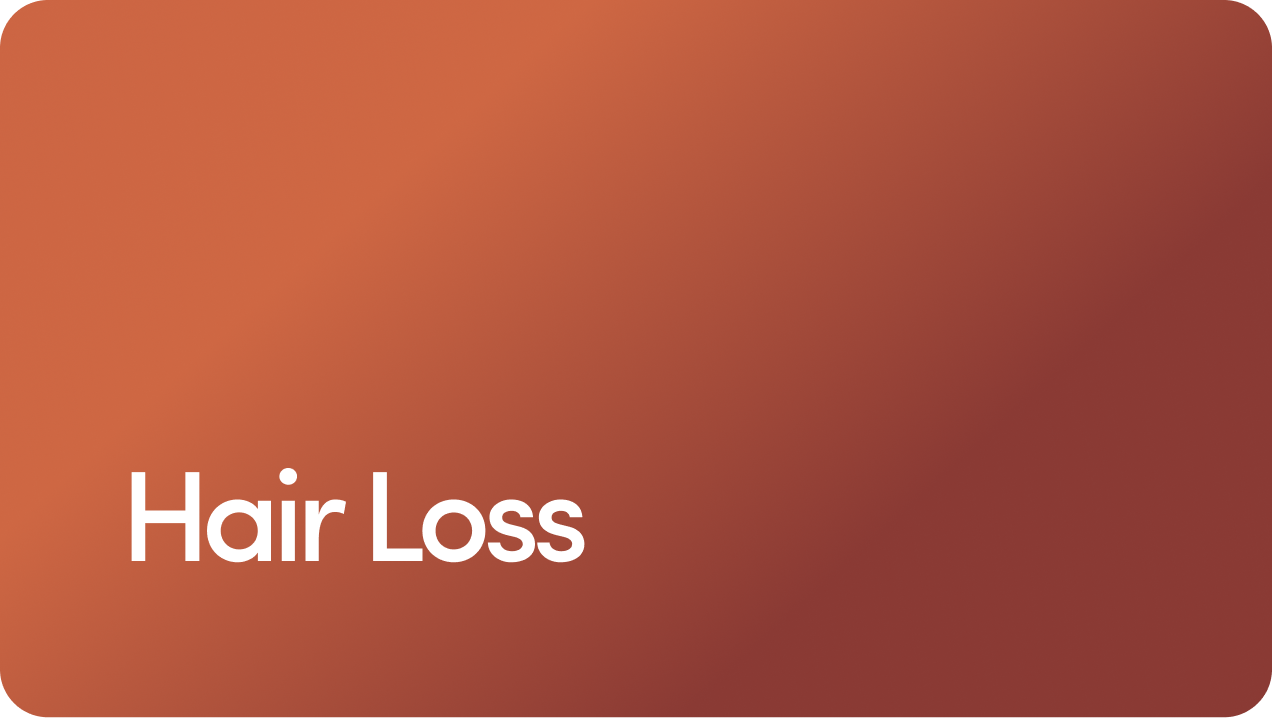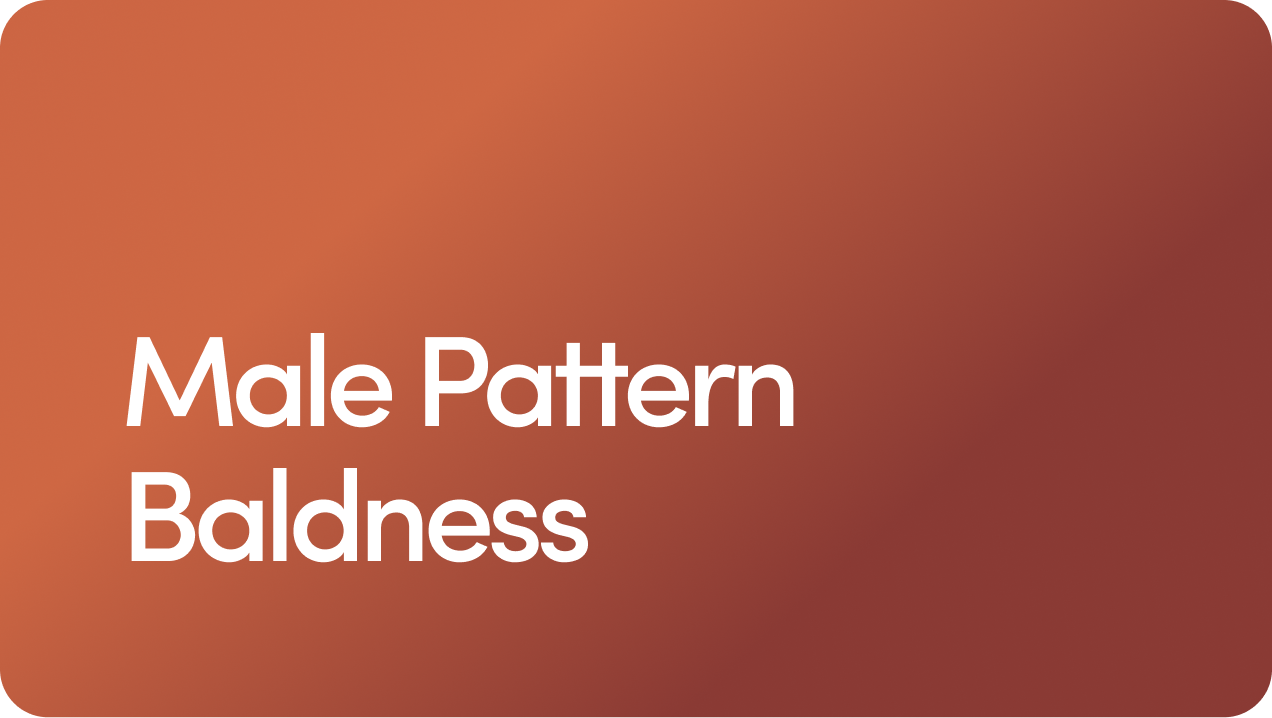Does Pomade Cause Hair Loss?
A few too many stray hairs in your brush, comb, or hands after styling your hair might make you suspicious of the products you’re applying. But can pomade cause hair loss?
Overview
A few too many stray hairs in your brush, comb, or hands after styling your hair might make you suspicious of the products you’re applying. But can pomade cause hair loss? And if so, why does pomade cause hair loss?
While using pomade — a styling product that gives hair hold while adding some shine — might make a receding hairline more obvious, there’s currently no evidence that pomade, wax, hair gel, or any other hairstyling products are linked to hair loss. That said, pomade has some potential downsides for men’s hair health that you should be aware of.
Below, we’ll explain pomade’s possible effects on hair health. We’ll also touch on the different factors that can cause hair loss or thinning hair and what to do about it.
Does Pomade Cause Hair Loss?
First, let’s talk about pomade itself. Most pomades are oil- or wax-based, though there are also water-based options. Water-based pomades are easier to remove than oil-based formulas, which are typically made with coconut oil or castor oil and will repel the water.
No scientific evidence shows that any type of pomade or other hairstyling product causes hair loss in men. Some guys might worry that applying too much of it (or using it too often) will make their hair fall out, but this doesn’t appear to be the case.
However, if the product has a strong hold, a few hairs may come out when you try to brush or wash it out.
Since styling products are not a known cause of hair loss, there might be something else going on if you notice hair thinning (which we’ll cover in a bit).
It's also normal to lose between 50 to 100 hairs daily, so what you see could be run-of-the-mill shedding.
Does Pomade Damage Hair?
Though pomade isn’t the cause of significant hair loss, you may still be wondering if pomade is bad for your hair. Pomade is no more likely to damage hair than any other hair product, especially if you’re mindful of how you style and rinse. So no, pomade is not going to ruin your hair.
However, it’s always good to pay attention to the ingredients in your hair care products, as harsh chemicals or ingredients can dry or damage otherwise healthy hair over time.
Here are a couple of chemicals to be mindful of.
Parabens
Parabens are endocrine-disrupting chemicals, meaning they can affect hormone levels. There’s a link between hormones and certain types of hair loss, so when something gets them off balance, it’s possible to see hair growth or density changes.
A few common parabens you may see on ingredient lists include methylparaben, ethylparaben, propylparaben, butylparaben, or isobutylparaben.
If you’ve been using a product with parabens, don’t freak out! There’s a very small amount of them in hair products. But you can always switch to a paraben-free formula now that you know they can negatively affect your hair.
Phthalates
Phthalates are often used in haircare products like hairspray, gels, or pomades because they provide a flexible hold. But like parabens, they’re endocrine disruptors and can potentially affect hormone balance.
Again, you shouldn’t lose sleep over it if you've been using products containing phthalates. The Food and Drug Administration (FDA) states that human exposure to phthalates from cosmetics is low compared to levels that seem to cause adverse effects in animals — which is why they’re not banned.
But you still might want to avoid hair products containing ingredients like dimethyl phthalate if possible. Instead, look for a pomade with hydrating ingredients that moisturize hair while offering hold, like beeswax or natural oils like jojoba, coconut oil, or shea butter.
What Causes Hair Loss & How to Treat Hair Loss
So, if pomade is (probably) not the cause of your hair loss, what is? There are several forms of hair loss, each with specific causes. Let’s break it down.
Male pattern baldness. The most common form of hair loss in men, male pattern baldness, is caused by a combination of genetics and a hormone called dihydrotestosterone (DHT).
Telogen effluvium. This temporary form of hair loss usually occurs after a stressful event, a sudden change in hormone levels, or starting a new medication. Telogen effluvium typically affects the entire scalp, causing hair loss in a diffuse pattern.
Alopecia areata. This rarer type of hair loss is an autoimmune disease that causes patchy hair loss.
Traction alopecia. Traction alopecia is caused by wearing overly tight hairstyles that pull at the hair’s roots.
We’ve talked more about the factors that can cause hair loss in our detailed guide to the types of alopecia.
The good news is that most types of hair loss are temporary or can be treated. If you’re experiencing male pattern baldness — like so many men do — there are medications and products available to prevent and treat it.
Minoxidil
This over-the-counter topical medication stimulates hair growth, likely by increasing blood flow to hair follicles. We offer it in two forms: minoxidil foam and minoxidil solution (a liquid). Research shows that both have significant positive effects on hair growth.
You can learn more about how minoxidil works and how to use it in our detailed guide to applying minoxidil.
Finasteride
This prescription medication reduces levels of DHT, the hormone that causes male pattern baldness. It comes in tablet form, and you have to take it daily to maintain and protect your hair.
It’s also available topically. We offer finasteride online after a consultation with a healthcare provider who will determine if a prescription is appropriate.
Minoxidil and Finasteride Together
Research shows that minoxidil and finasteride are most effective at treating hair loss when used together. We offer both medications in our Hair Power Pack or blended into one product in our topical finasteride & minoxidil spray.
Haircare Products
Using the right products for hair loss can make a big difference in how your hair looks. While they won’t totally regrow lost hair, products containing saw palmetto (like our thickening shampoo) can partially block DHT, just like finasteride.
More research is needed on saw palmetto and hair loss, but a 2020 meta-analysis found that 83 percent of people saw increased hair density when using saw palmetto for hair loss.
Does Pomade Cause Hair Loss?: The Final Word
Pomade and other styling products can give your hair a smooth, shiny appearance and hold it in place throughout the day.
Currently, no scientific research shows that pomade causes male pattern baldness or accelerates hair loss. But here’s what to remember about pomade and hair loss:
While pomade doesn’t cause hair loss, it may highlight it — styling your hair using pomade might make a receding hairline or other signs of hair loss more noticeable.
Be careful when using or washing out pomade, as being a little too hands-on could result in accidentally pulling out a few extra hairs. Switching to a pomade with a light hold may help if you notice substantial hair fall after styling — or just if you’re seeing product buildup.
If you're experiencing significant hair loss, your hairstyling products probably aren't to blame. Male pattern baldness (aka androgenetic alopecia) is the most common cause of hair loss, but other factors, such as certain medical conditions, medications, or stress, can also be a factor.
If you’re starting to lose your hair and want to take action, connect with a healthcare provider online to learn more about your options.
9 Sources
- American Academy of Dermatology. (n.d.) Do you have hair loss or hair shedding?. https://www.aad.org/public/diseases/hair-loss/insider/shedding
- Evyatar E, et al. (2020). Natural Hair Supplement: Friend or Foe? Saw Palmetto, a Systematic Review in Alopecia. https://www.ncbi.nlm.nih.gov/pmc/articles/PMC7706486/
- Hasan R, et al. (2022). Effects of Hormones and Endocrine Disorders on Hair Growth. https://www.ncbi.nlm.nih.gov/pmc/articles/PMC9788837/
- Ho C, et al. (2020). Androgenetic Alopecia. https://www.ncbi.nlm.nih.gov/books/NBK430924/
- Hughe EC, et al. (2020). Telogen Effluvium. https://www.ncbi.nlm.nih.gov/books/NBK430848/
- Hu R, et al. (2015). Combined treatment with oral finasteride and topical minoxidil in male androgenetic alopecia: a randomized and comparative study in Chinese patients. https://onlinelibrary.wiley.com/doi/abs/10.1111/dth.12246
- Rhodes T, et al. (1998). Prevalence of male pattern hair loss in 18-49 year old men. https://pubmed.ncbi.nlm.nih.gov/9865198/
- Suchonwanit P, et al. (2019). Minoxidil and its use in hair disorders: a review. Drug Design, Development and Therapy. https://www.ncbi.nlm.nih.gov/pmc/articles/PMC6691938/
- U.S. Food & Drug Administration (FDA). (2022). Phthalates in Cosmetics. https://www.fda.gov/cosmetics/cosmetic-ingredients/phthalates-cosmetics
Editorial Standards
Hims & Hers has strict sourcing guidelines to ensure our content is accurate and current. We rely on peer-reviewed studies, academic research institutions, and medical associations. We strive to use primary sources and refrain from using tertiary references. See a mistake? Let us know at [email protected]!
Related Conditions
 Hair Loss
Hair Loss
 Male Pattern Baldness
Male Pattern Baldness
 Dandruff
Dandruff
 Scarring Alopecia
Scarring Alopecia
 Seborrheic Dermatitis
Seborrheic Dermatitis
*All images feature a model portrayal
(unless otherwise noted).
